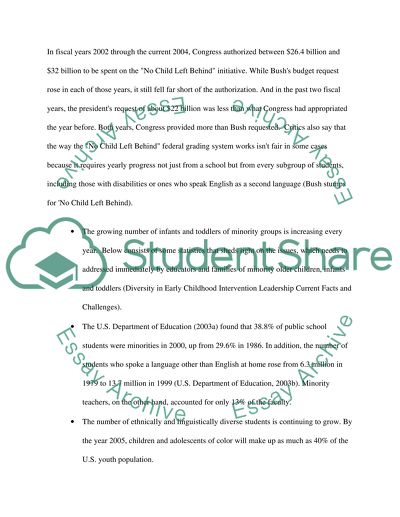The No Child Left Behind Act Essay Example | Topics and Well Written Essays - 1250 words. Retrieved from https://studentshare.org/miscellaneous/1522550-the-no-child-left-behind-act
The No Child Left Behind Act Essay Example | Topics and Well Written Essays - 1250 Words. https://studentshare.org/miscellaneous/1522550-the-no-child-left-behind-act.


